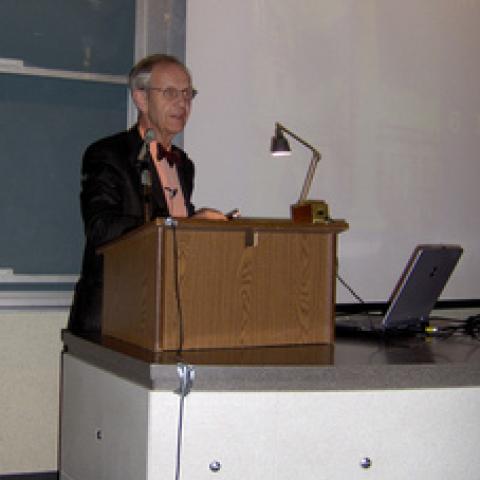Tonio Hölscher
Professor of Classical Archaeology, University of Heidelberg
Visual Power in Ancient Greece and Rome
February 7:
Space, Action and Image: Public Rituals and Urban Architecture
2050 Valley Life Sciences Building
February 14:
Time, Memory and Image: Public Monuments and the Danger of Collective Identity
2040 Valley Life Sciences Building
February 21:
Person, Identity and Image: Public Roles and the Appeal of the Individual
2040 Valley Life Sciences Building
February 28:
Images and the Dignity of Reality: Producing and Viewing in Ancient Art
2040 Valley Life Sciences Building
March 7:
Images and Social Interaction: The Life of Artefacts
2040 Valley Life Sciences Building
March 14:
Images and the Order of Things: Towards a Theory of decorum
2040 Valley Life Sciences Building
All lectures begin at 8:10 pm. The public is invited.

More about Tonio Hölscher and his Sather Lectures
The 93rd Sather Professor is Tonio Hölscher, who has been since 1975 Professor of Classical Archaeology at the University of Heidelberg. He received the Ph.D. in 1965 from Heidelberg with a dissertation on Victoria Romana (1967) and his Habilitation with a monograph on Griechische Historienbilder (1973). Hölscher has been Guest Professor at the University of Naples (1988), Meyer Shapiro Visiting Professor at Columbia University (1993), Fellow of the Institute for Advanced Study at Berlin (1997-98), Jerome Lecturer at the University of Michigan, Ann Arbor (2001), Visiting Professor at the American Academy in Rome (2002) and Research Professor at the German Archaeological Institute in Rome (2002-04). Hölscher's scholarly work extends over all periods of Greek and Roman culture, concentrating on interrelations among art, politics, and social life. A central topic is public monuments and political iconography: beyond his monographs on the Roman goddess of victory and on Greek historical imagery, he has published a collection of major articles in Italian translation (Monumenti statali e pubblico, 1993). In further studies he has explored the functions and uses of images in contexts of social life, particularly in classical Greece. This approach in turn sparked Hölscher's interest in ancient urbanism, resulting in a study on Öffentliche Räume in frühen griechischen Städten (2nd ed. 1998), and also inspired an interest in the semiotic aspects of artistic forms. He has explored the latter in Römische Bildsprache als semantisches System (1987; translated also into Italian [1995] and into English as The Language of Images in Roman Art [Cambridge University Press, 2004]). He is currently at work on two projects: a monograph entitled The Fight for Public Memory: Political Monuments in Ancient Greece, Etruria, and Rome and a Handbook of Roman State Monuments.
The aim of these Sather lectures is to explore some fundamental phenomena of the visual aspects of Greek and Roman culture. Considering the increasing relevance of visuality in modern public and social life, it seems worthwhile to investigate the enormous power and impact of visual practice in the ancient world. Academic traditions have for centuries concentrated on the linguistic elements of human culture, while the visual side has been almost entirely reduced to works of art. Visuality, however, is a general dimension of culture: it covers the creations of art as well as the practices and structures of real life. Life as an image and images as factors of life: this general theme will be developed in six aspects through the six lectures.